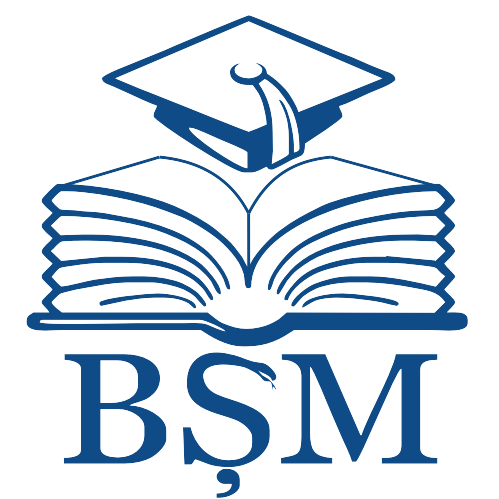| DC Field | Value | Language |
|---|
| dc.contributor.author | Croitoru, Dan | |
| dc.contributor.author | Andronachi, Victor | |
| dc.contributor.author | Vișnevschi, Sergiu | |
| dc.contributor.author | Pavlovschi, Ecaterina | |
| dc.date.accessioned | 2025-06-26T11:14:31Z | |
| dc.date.available | 2025-06-26T11:14:31Z | |
| dc.date.issued | 2024 | |
| dc.identifier.citation | CROITORU, Dan; Victor ANDRONACHI; Sergiu VIȘNEVSCHI and Ecaterina PAVLOVSCHI. Surgical site infections in open craniotomy – a systematic literature review. In: Sănătate publică, economie şi management în medicină. 2024, nr. 4(101), p. 90-92. ISSN 1729-8687. | en_US |
| dc.identifier.issn | 1729-8687 | |
| dc.identifier.uri | https://revistaspemm.md/wp-content/uploads/2024/10/CM4101_2024_septembrie_TIPAR-1.pdf | |
| dc.identifier.uri | https://repository.usmf.md/handle/20.500.12710/30806 | |
| dc.description.abstract | Introduction
Open craniotomies are performed in the neurosurgical field despite the availability of other techniques
in this anatomical region. Surgical site infections (SSI) are common nosocomial entities for each specialty
but a higher regard is given to the above-mentioned approach. Although the antibiotic resistance is posing
a threat for the health system some medical field experts are regarding other methods in order to prevent
a surgical site infection (SSI). It is well regarded that such conditions can prolong the time of hospital stay
while it is noteworthy that there are no perioperative infections in the surgical implantation of the neurostimulator devices for Parkisons Disease and they are rather caused by open craniotomies. Brain abscesses may
sometimes progress into glioblastomas according to recent scientific reports, with a lack of clear evidence
for this statement. Imaging methods do not influence the clinical outcome in the means of nosocomial
infections while craniotomies do.
Goal
Emphasization of the importance of surgical site infections (SSI) in open craniotomies.
Materials and methods
After writing the keywords ‘infection’ and ‘open craniotomy’ in the PubMed database on 13.04.2024 we
have received 191 sources from which we have included 64 relevant studies based on inclusion/exclusion
criteria. We included articles published during 2014-2024, were statistically relevant with a consideration for
surgical site infections in a craniotomy and had no conflict of interests. The excluded sources were made on
animals, considered different surgical interventions, were protocol validations and took into consideration
odontogenic infections.
Results
A series of influencing factors were regarded for the surgical site infection (SSI) and those are – male
gender, previous surgery, subgaleal drainage of pathologic collections, foreign materials, and ventricular
openings.
In order to avoid open craniotomies, the laser interstitial thermal therapy (LITT) may be performed,
and sometimes may even be followed by such a craniotomy in order to diminish the sequellae of surgical interventions like glioma resection. It must be noted that repeated surgical interventions are not
proven to provide significant improvement. Radiosurgical interventions can be augmented by a laser
interstitial thermal therapy (LITT) in order to avoid its complications. Repeated trepanations can lead
to infections without the resolution of the primary pathologic condition. Bedside percutaneous three
millimeter twist-drill trephination is an alternative to the classical one that is safer and more effective.
Brain biopsies are not proven to cause nosocomial infections. The transpalpebral approach is proven to
have less postoperative infections.
The microscopic method does not have a higher infectivity then the endoscopic one in neurosurgery
while it is proven that neuroendoscopy is relatively inoffensive in a cranioplasty performed in children (0.4%
infection rate against 6.2% in the open craniotomy) while posttransfusional infections are uncommon. Frontal
sinus reconstructions decrease the incidence of postcraniotomy infections.
Several comorbidities (pneumonia, sinusitis, otitis media) can be exacerbated after surgical interventions
and lead to a secondary infection. Cerebrospinal fluid (CSF) leakage from the dura mater is associated with
higher rates of infection while the closure technique is not related to this. Brain abscesses, neurocysticercosis,
cerebral toxoplamosis, mycotic aneurisms, nasal dermoids, encephalitis, Pot Puffy’s tumour, multiloculated
hydrocephalus, and arachnoid cysts are the specific complications and/or exacerbations characteristic for
this region in case of surgical involvement. The preauricular sinus is an anatomical anomaly that can become
infected and resemble the clinical signs of a surgical site infections (SSI) or systemic infections. Seizures can
be caused both by antibiotic overdose, and cerebral abscesses.
Staphylococcous aureus, and Escherichia coli are the predominant bacteria found in cerebral abscesses.
Posttraumatic injury sites are infected mostly with Staphylococcous aureus, and Klebsiella pneumoniae. Aspergilloma, zygomycosis, chromomycosis, cryptococcoma, mucormycosis, and candida infections were the
most prevalent intracranial fungal infections. Acinetobacter baumanii is a well-known highly resistant bacteria
that may cause severe intracranial infections. The less known Lactococcus lactis cremoris is not aggressive
but often neglected by clinicians in the context of surgical site infections (SSI). The nasal microbiome is an
independent factor for infection in the patients with elective surgery.
Gelatin sponges, drainage systems in the ventricular system with continuous irrigation, and pericranial
flaps are reducing the incidence of surgical site infections (SSI). It must be regarded that extraventricular
drainage is increasing the likelihood of a postoperative infection. Vancomycin is a trending antibiotic for the
treatment of pediatric and adult surgical site infections (SSI) after an open craniotomy. Tigecycline delivered
via nanoparticles through the blood brain barrier (BBB) is the elective anibiotic in infections with A. baumanii.
Overall a better outcome is obtained if the patients are discharged the same day as they were operated.
Conclusions
Surgical site infections (SSI) in open craniotomies remain significant threats to the postoperative patients and are a limiting factor for the development of better postoperative outcomes like recurrence, and
the quality of life (QOL). | en_US |
| dc.language.iso | en | en_US |
| dc.publisher | Asociația Obștească "Economie, Management și Psihologie în Medicină" din Republica Moldova | en_US |
| dc.relation.ispartof | Sănătate publică, economie şi management în medicină: Conferința științifico-practică națională cu participare internațională „ Prevenirea și controlul infecțiilor asociate asistenței medicale” Chișinău, 19-20 septembrie 2024 | en_US |
| dc.subject | Surgical site infections | en_US |
| dc.subject | open craniotomy | en_US |
| dc.subject | neurosurgical complications | en_US |
| dc.subject.ddc | CZU: 616.714.1-089.888.5-06:616-022.7 | en_US |
| dc.title | Surgical site infections in open craniotomy – a systematic literature review | en_US |
| dc.type | Other | en_US |
| Appears in Collections: | Sănătate Publică, Economie şi Management în Medicină Nr. 4(101) / 2024
|


